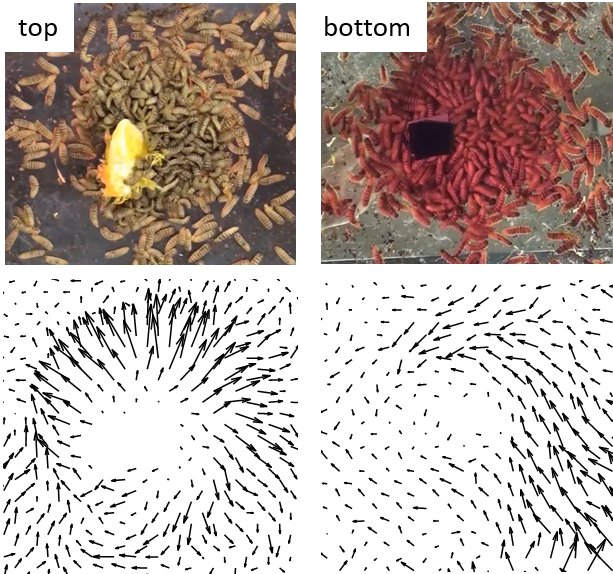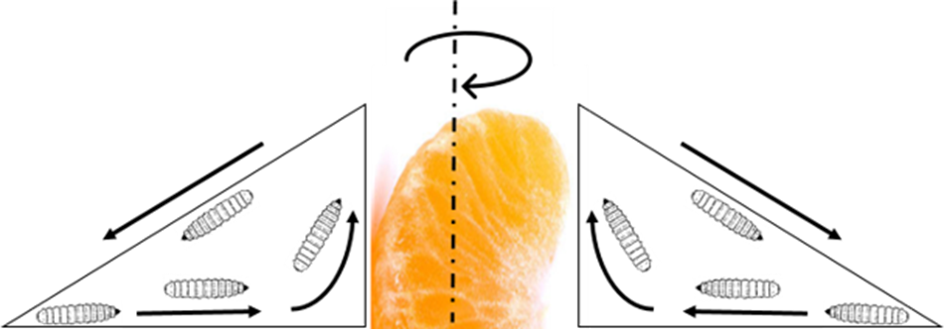A single larva eats for only 5 ± 8 minutes at a time, for 44% of the time it is around food. Its mouth shears food very quickly:
Since not all larvae are eating at the same time, hungry larvae can replace full larvae to eat.
Larvae crawl towards food on the bottom of a container:
And fall away from the food after eating on the top layer of the fountain.
We use Particle Image Velocimetry to find that larvae form an outflow on the top and inflow/vortex on the bottom:

We then do this with increasing numbers of larvae and calculate the outflow of larvae per minute away from food (equal to the inflow of hungry larvae to food). This mixing increases their eating rates.

